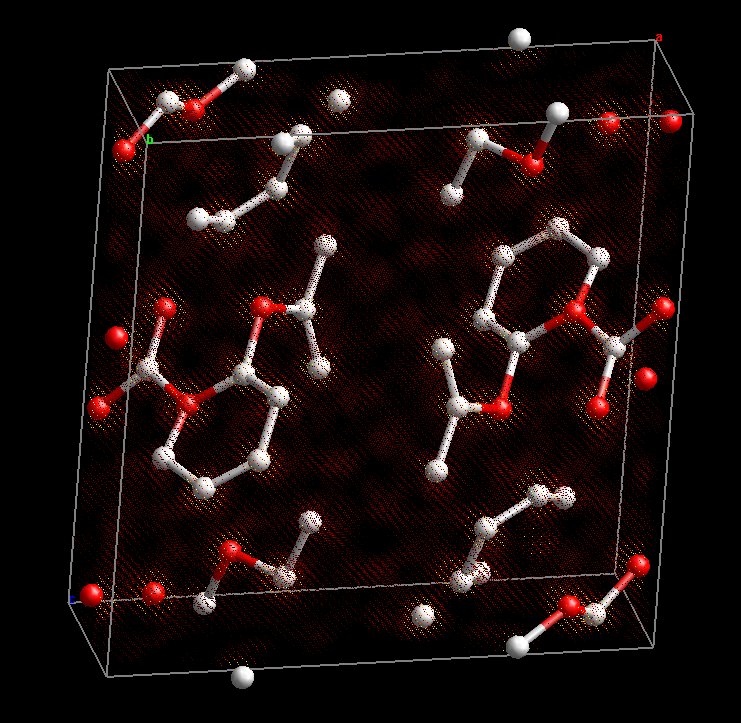'Hands-on' self-test materials for organic structure solution from powder diffraction data
Rationale: suggested organic materials for 'hands-on' testing of diffractometer and methodology for indexing, structure solution and refinement
Requirements:
- materials should be cheap and easy to obtain in a pure form
- should be stable in the laboratory environment (humidity, temperature, etc)
- examples of varying difficulty & complexity
- solution should be possible using data from a correctly configured laboratory diffractometer
The general idea is that anyone entering the field go through the complete process from mounting samples, collecting data, indexing and successfully solving the structure of these knowns before moving onto their research samples.
Example data are given for people to compare with their own. Those wishing to test their analysis skills separately may use these data, but a more extensive collection of data from organics may be found at www.powderdata.info
The materials suggested here will not replace the use of NIST or other standards in checking instrument alignment!
PowDLL utility to convert file formats available from http://users.uoi.gr/nkourkou/powdll.htm
(Note: downloading xye files in Firefox requires right clicking and 'save link as')
Aspirin - widely available and cheap. Occurs as a single polymorph. Monoclinic structure with minimal degrees of freedom/torsion angles
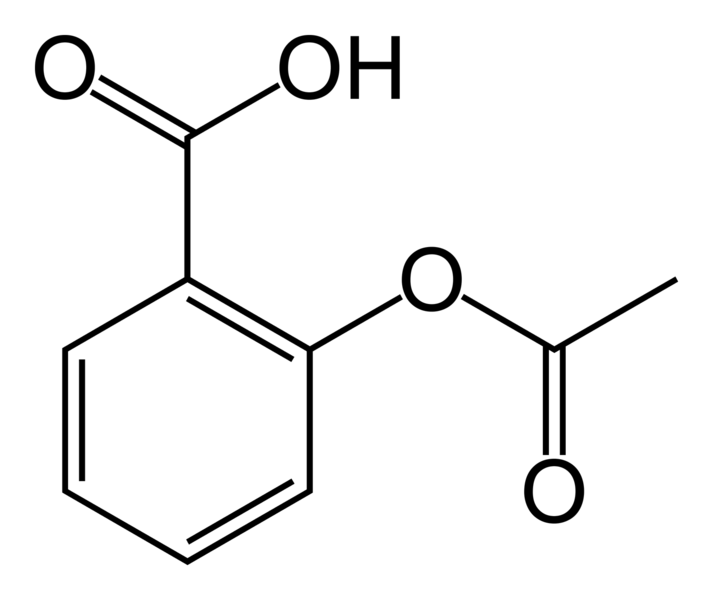 example data (the very good, the not-so-bad and the extremely ugly!)
example data (the very good, the not-so-bad and the extremely ugly!)
- ID31 (Andy Fitch - ESRF) high resolution synchrotron data
-
- ground Bayer brand pharmaceutical tablet
- 0.79483 Å xye format datafile here
- laboratory data - (Pamela Whitfield - NRC, Ottawa) transmission
-
- ground Canadian generic pharmaceutical tablet - uncoated
- Bruker D8 Advance, CuKa 0.5mm borosilicate capillary, focussing mirror and Vantec PSD
-
- effective monochromator angle for focussing mirror for Lorentz-polarization correction is 27.1°
- Suitable lab diffractometer configuration for organic samples
- 5-115° 2theta, 0.0142° step, 1s count, 2 hour scan - Bruker raw file here
-
- structure solves readily using simulated annealing
- 5-115° 2theta, 4 range variable count/step, 11 hour scan time - normalized xye format file here
- individual ranges (Bruker raw format)
-
aspirin_range1.raw (5-32.5°, 0.0142°, 2s)
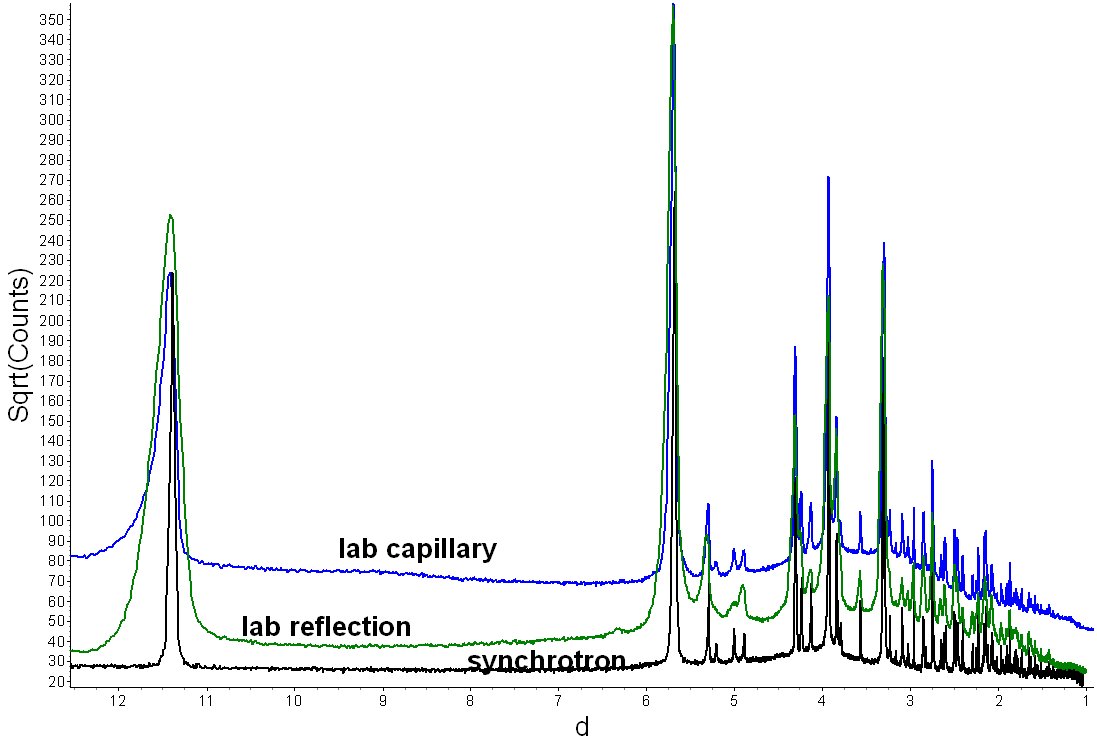
aspirin_range2.raw (32.5-60°, 0.0214°, 4s)
aspirin_range3.raw (60-87.5°, 0.0285°, 8s)
-
- variable counting data good enough for solution to be found using charge flipping
- variable counting data good enough for solution to be found using charge flipping
- laboratory data - (Pamela Whitfield - NRC, Ottawa) theta-theta reflection
-
- ground Canadian generic pharmaceutical tablet - uncoated
- Bruker D8 Advance, top-loaded sample, CuKa, 0.2° divergence, Vantec PSD and nickel filter
- Unsuitable lab diffractometer configuration for organic samples - this is what your data should not look like...
- 5-100° 2theta, 0.0142° step, 0.5s count - Bruker raw file here
the structure of aspirin (click image for larger version)
determined with charge flipping using the variable count lab data
Sucrose - very cheap & very easy to obtain in pure form :-) More complex structure with many more possible refineable bond/torsion angles
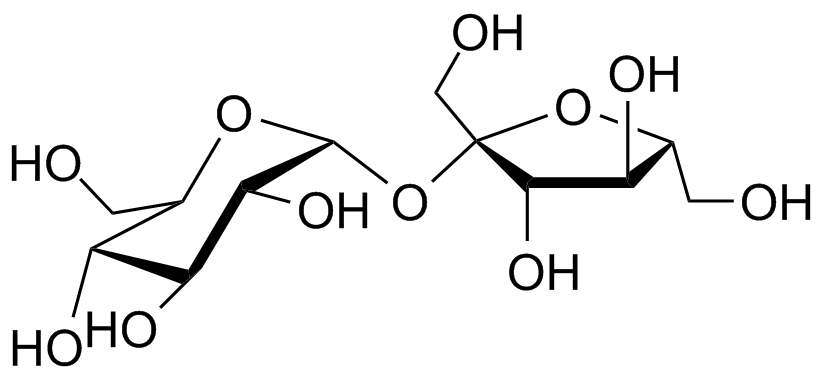
- laboratory data - (Pamela Whitfield - NRC, Ottawa) transmission
-
- ground Canadian granulated sugar
- Bruker D8 Advance, CuKa 0.5mm quartz capillary, focussing mirror and Vantec PSD
- 5-115° 2theta, 0.0142° step, 1s count, 2 hour scan - Bruker raw file here
-
- data suitable for simulated annealing with an appropriate z-matrix rigid body
- 5-115° 2theta, 4 range variable count/step, 11 hour scan time - normalized xye format file here
-
- solution can be found with charge flipping using the VCT data
Anhydrous beta-Caffeine stable RT form. alpha-caffeine is formed above 150°C and is metastable at room temperature. Beta-caffeine has a very large unit cell (>4000 Å3) so is more challenging to index correctly. The structure was only recently solved in 2007 using powder diffraction data.
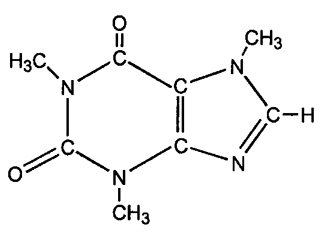
- laboratory data - (Pamela Whitfield- NRC, Ottawa) transmission
-
- ground laboratory grade, Sigma-Adrich Sigmapure
- Bruker D8 Advance, CuKa 0.5mm quartz capillary, focussing mirror and Vantec PSD
- 5-115° 2theta, 4 range variable count/step, 16.5 hour scan time, normalized xye format here
-
- this data will solve structure using simulated annealing and an appropriate z-matrix rigid body
caffeine solution from laboratory capillary data using simulated annealing 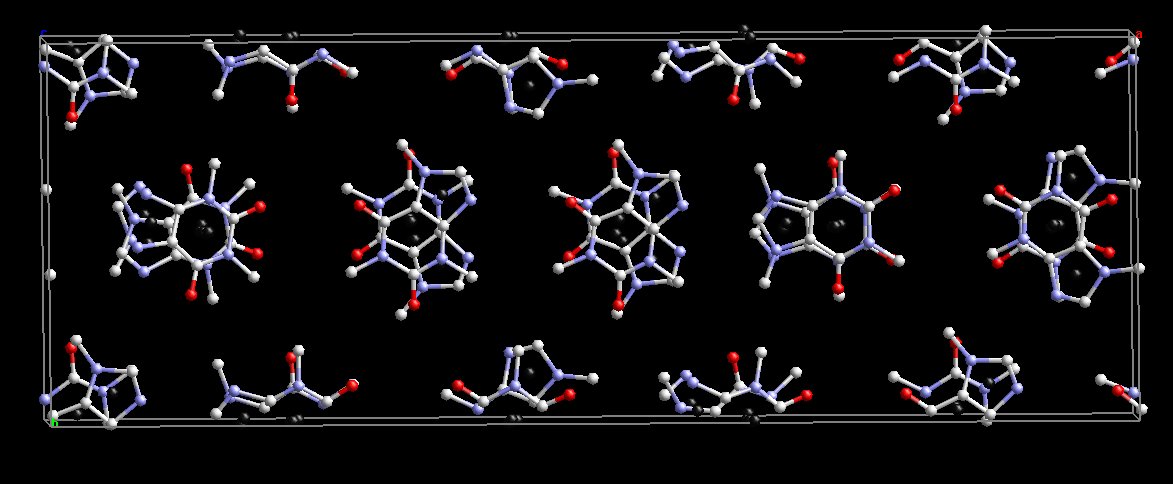
Last updated 21 August 2009 (P.S. Whitfield)
These pages are maintained by the Commission Last updated: 15 Oct 2021


![[Commission Home Page] [Commission logo]](https://www.iucr.org/__data/assets/image/0015/22164/iuccpd2.gif)
